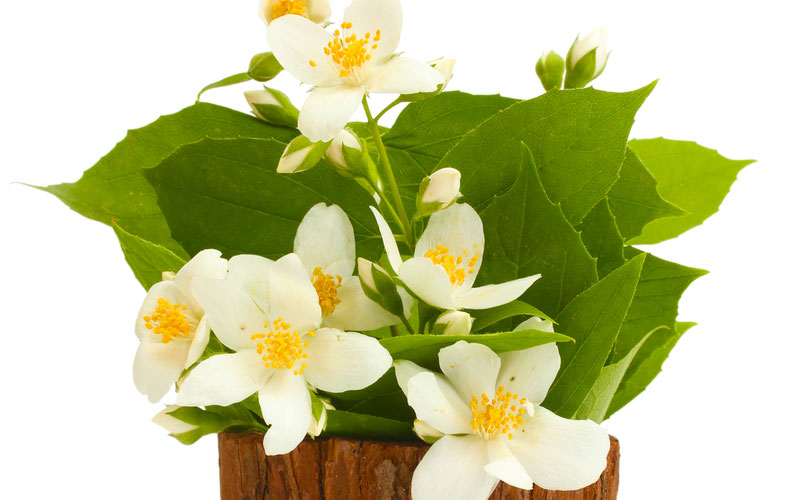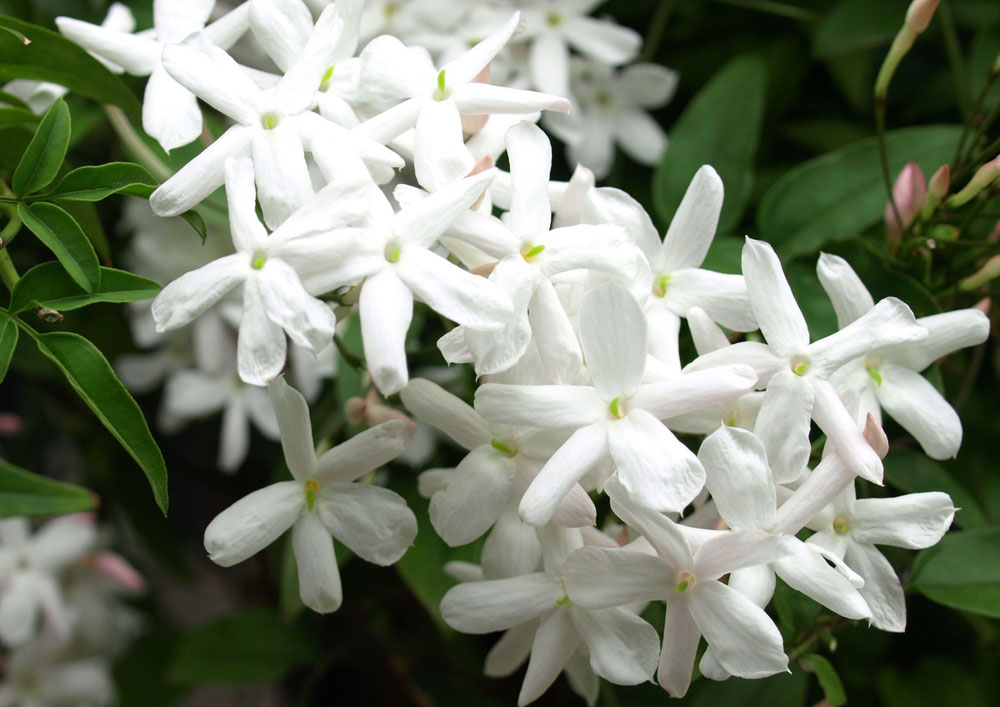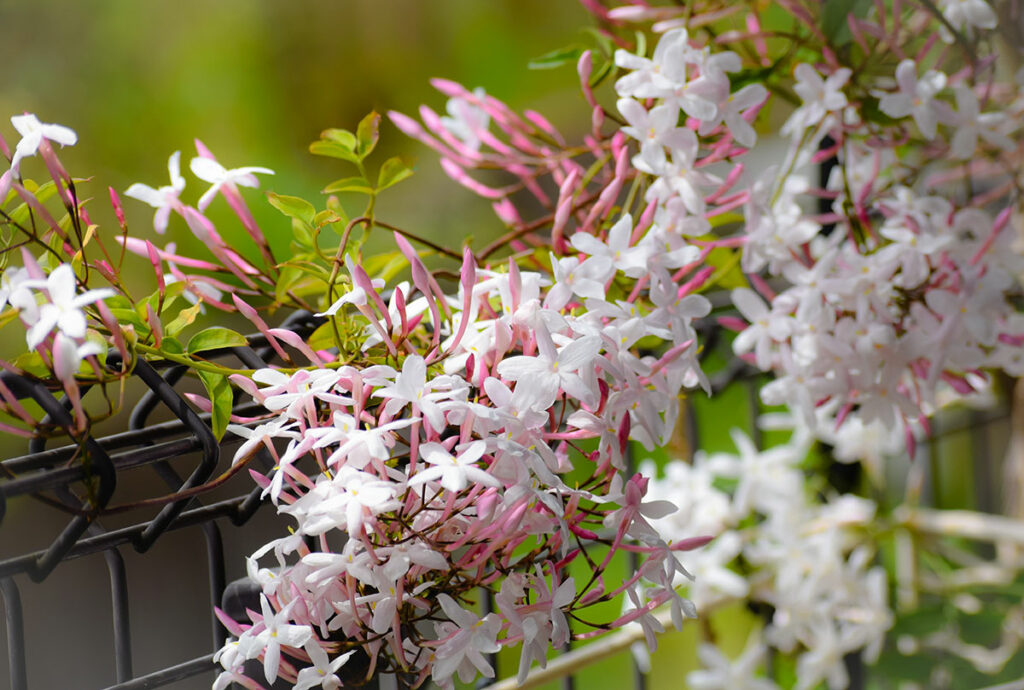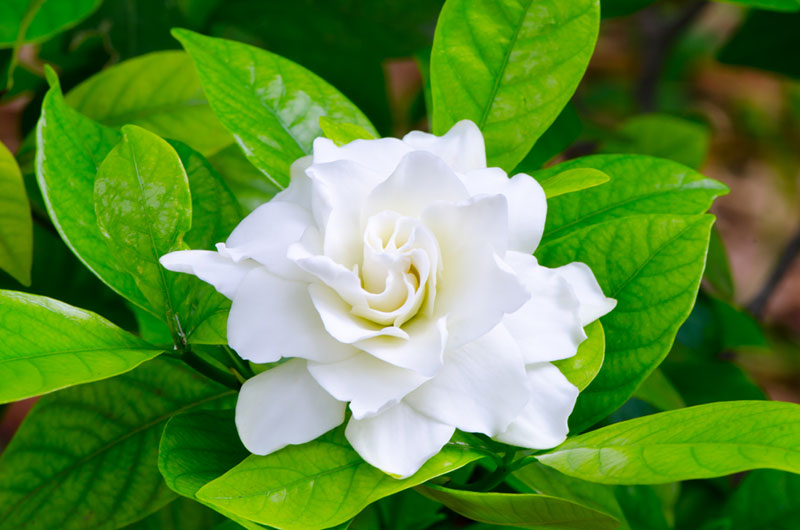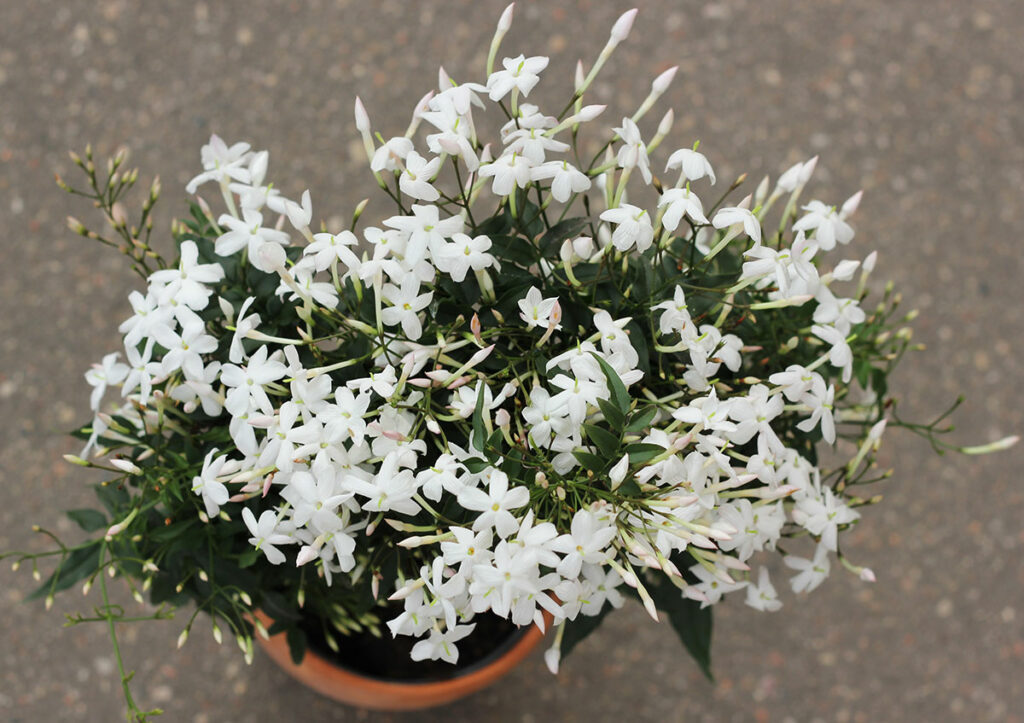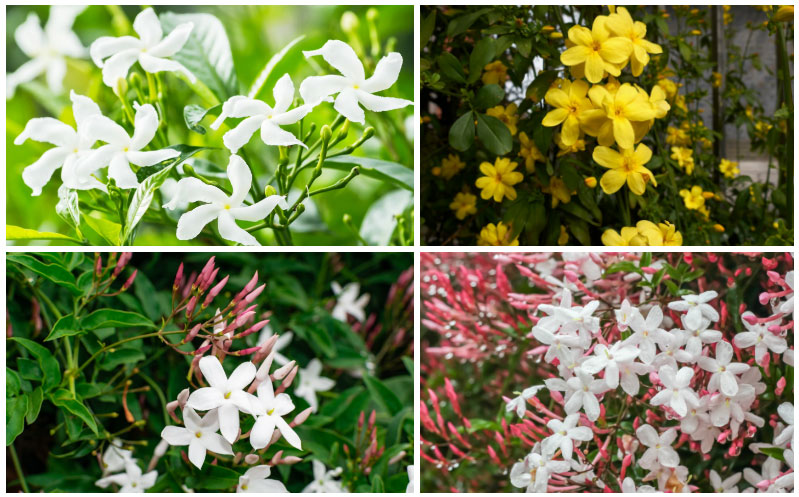Jasmine is a tropical plant that has over 200 different species. The plant produces charming little star-shaped white blooms that often have pink highlights on the petals. In addition to looking beautiful, the Jasmine flower also has a pleasant sweet smell that is calming to your body. I love the scent of Jasmine; in fact, so much that I even named my daughter after this exquisite plant.
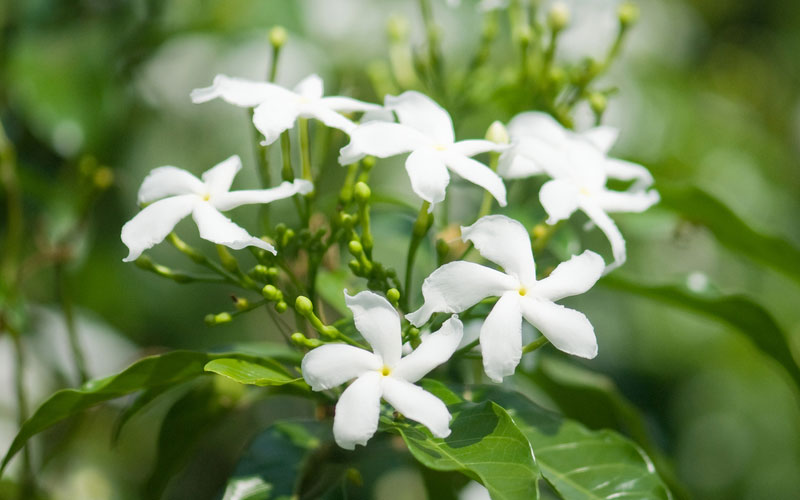
I never really grew Jasmine plants in my home until recently, and when I enter my home now, its sweet aroma is the first thing that I smell. Caring for tropical plants can be tricky, so in this guide I will give you the tools that you need to make your Jasmine plants thrive.
How to Plant and Care for Jasmine
Soil – The soil that your Jasmine plant should be planted in can vary quite a bit. I like to use an organic blend of porous material as well as bark, peat, and other soil that drains well.
Sun – Jasmine plants like bright sunlight, so if the plant is indoors, make sure that it is getting sunlight for up to four hours a day. Having the plant in front of a southern facing window will do wonders for its growth. During the winter months, the plant will not need quite as much direct sunlight.
Temperature – Being a tropical plant, Jasmine plants are able to handle hot and humid temperatures, but they will not survive cold, winter temperatures. When growing Jasmine, try to keep the temperature between 60 to 75 degrees Fahrenheit. After the plant is through blooming, you can keep the plant in a cool room, but no cooler than 41 degrees.
Water – Jasmine plants need a lot of water, especially when they are in bloom. It is best to always keep the soil slightly moist. The plants should be watered on a weekly basis, but if the soil becomes dry before that, water the plant early.
Fertilizer – When fertilizing a Jasmine plant, you want to use a fertilizer that is rich in potassium and phosphorus. This type of fertilizer will help extend the bloom time of the plant. Indoor Jasmine plants should be fertilized at least twice a year, but during the growing season of spring and summer, liquid fertilizer can be fed to the plant every few weeks.
Growing Jasmine Indoors
Jasmine will thrive indoors if they are given proper care; in fact, they can grow up to two feet each year. This plant requires a lot of sun, so if you do not have a south facing window with a lot of sun available, then during the summer months, the plant will benefit from a few hours of being outside in the sun. Autumn arriving causes blooms to bud. Cool, well circulated air is great for encouraging winter blooms to form; if the temperature is too warm, the plant will not bloom.
Pinching and Pruning
When you begin to see new growth on a Jasmine plant, you should begin pinching the stems to promote growth. This process should be completed during the first two years of the plant’s life, and you should only pinch the top half inch of the stem. Once blooming has completed for the season, you should also consider pruning the plant.
You will want to remove any dead foliage or tangled stems from the plant. In addition, remove any diseased areas of the plant to make sure that the disease does not spread. If you are training your plant to grow a certain way, then you should trim unruly stems as well.
Propagation
The best way to propagate Jasmine is to use cuttings. The cuttings should be about three inches in length, and it should have two to three sets of leaves on the top of the cutting. To encourage the cutting to take root, you need to plant it in a soil mixture that contains peat moss, sand, and other types of soil that drain well. Cover the plant with a plastic tent to encourage growth; this can easily be constructed from a plastic bag. Make sure to place the plant in a well-lit room that is about 65 degrees Fahrenheit. In about four weeks, you will see new growth, which indicates that the plant has taken root. Allow the new plant to grow until the roots fill the starter pot, and then transplant it in the early spring of the year.
Winter Care
Jasmines are easy to care for in the winter, but you should cut back on the amount of sunlight, water, and fertilizer that you are giving it. In addition, the plant will be fine in cooler rooms of your home; as long as the temperature does not drop below 40 degrees Fahrenheit, the plant will be able to endure the cold winter months indoors.
Common Problems That Jasmine Plants Experience
Since Jasmines are tropical plants, one of the most common issues related to them is rust and blight. These two conditions cause damage to the leaves; it can affect the coloration of the foliage, make the leaves wilt, and it can even pass to younger stems or cutting offspring that is taken from the mature plant. Getting rid of fungal issues such as these require baking soda spray and plenty of aeration. If these issues remain, you may need to clean the pot and the roots to ensure that the disease is gone.
Aphids, whiteflies, and mites are insects that suck the vitality out of a Jasmine plant and cause damage to the plant, but caterpillars, budworms, and webworms can cause damage to the leaves as well. The best way to get rid of most pests that can affect your Jasmine plants is to create a soapy solution that you can apply to the leaves of the plant. If you know what the pest is, then you can target it specifically with an insecticide spray.
If you are looking for a plant that will make your home smell amazing when it blooms, then Jasmines are perfect. Even though they are tropical plants, they are not that difficult to invigorate in an indoor space.
Where to Buy Jasmine
We found some nice Jasmine LIVE Plants on Amazon
For a list of different varieties of Jasmine, see this guide here!
Related Articles





